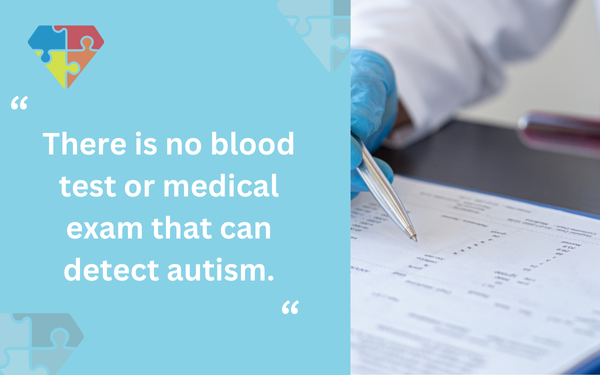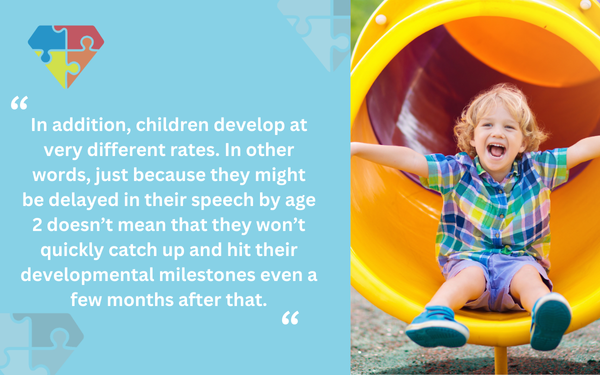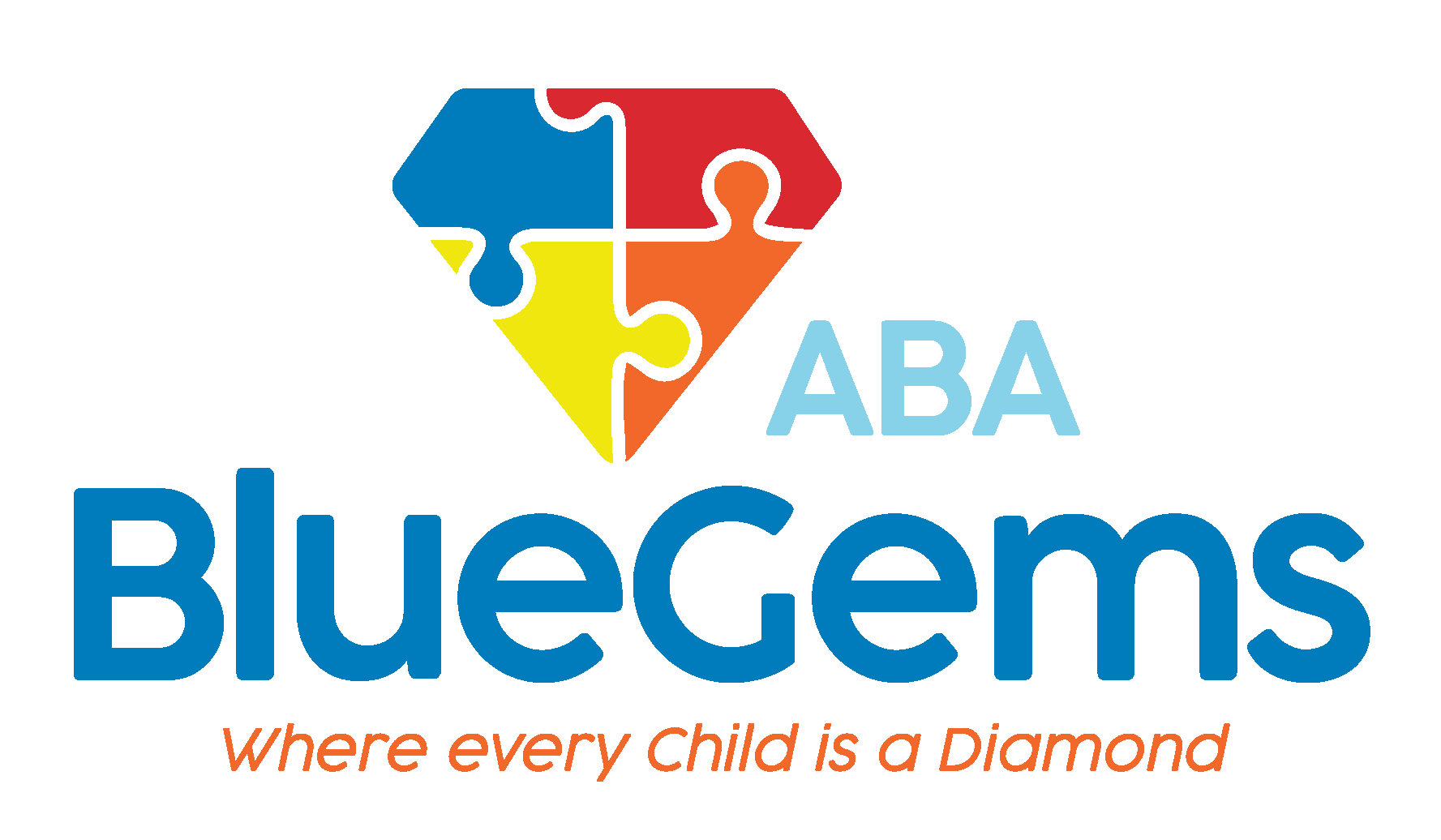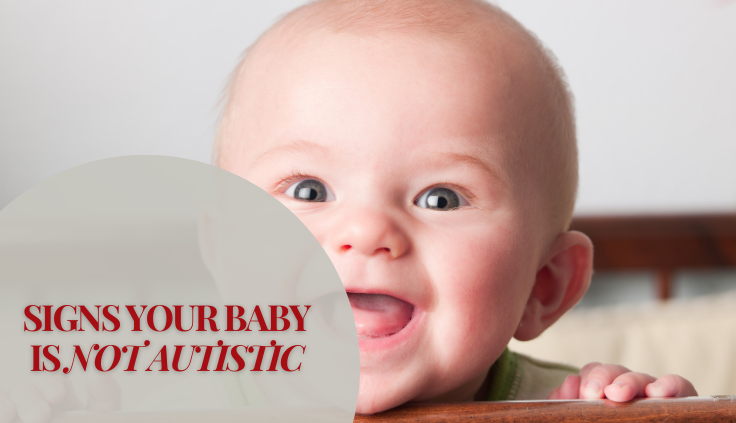Signs Your Baby is NOT Autistic
Thanks to advanced research and awareness campaigns, more people today are aware of the common signs and symptoms of autism spectrum disorder (ASD) than ever before. Much of this awareness comes from public fundraising and awareness campaigns and even regular visits to the pediatrician.
The increased support for autism awareness has led to a significant amount of public funding being dedicated to research, which has led to innovative treatment plans such as applied behavior analysis (ABA therapy) and early detection tests such as the M-CHAT.
As your child attends their routine visits at the pediatrician early in life, you will participate in early screenings for autism. You’ll be asked a series of questions about their behavior, and from that, the pediatrician may refer your child for further evaluation if need be.
All of this can sound quite scary, and a little confusing, too, as many children exhibit some of the signs of autism but don’t actually have ASD. So, what are some of the signs your baby is not autistic?
Let’s take a closer look.
Table Of Contents
What Are the Common Signs of Autism?
Before we discuss what autism is not, let’s discuss what it is.
ASD is a neurodevelopmental disorder that a child is born with and that will affect them throughout their lifetime. While there is no cure for autism, there are effective treatment programs that can support them as they need.
There is no blood test or medical exam that can detect autism. Instead, ASD diagnoses are given solely based on the prevalence of signs and symptoms of certain behaviors.

While autism can affect people to different severities across a wide spectrum, it is generally categorized as facing deficits in social interactions and communication, along with restrictive interests, repetitive behaviors and/or sensory sensitivities.
As a parent, you can begin to identify some of the common symptoms and signs of autism when your baby is young. That being said, these signs will typically become more prominent and noticeable as they get older — which is why most ASD diagnoses don’t occur until around age 31.
Some of the signs you can look out for, though, including if your child doesn’t make good eye contact, if they have limits or delays with their speech, if they face challenges in play or social interactions with others, if they have unusual interests or engage in repetitive behaviors, if they experience sensitivities to certain sensory stimuli, and if they are very resistant to even minor changes in their routine.
What Are the Signs Your Baby is Not Autistic?
While all of those signs are common among children with autism, they don’t automatically mean that your child has ASD. As mentioned, many neurotypical children will exhibit some of those common signs and traits.
In addition, children develop at very different rates. In other words, just because they might be delayed in their speech by age 2 doesn’t mean that they won’t quickly catch up and hit their developmental milestones even a few months after that.

Because of this, it can be challenging for parents to identify whether their baby has autism or not. Some of the main signs that your baby is not autistic, though, include …
- Communication skills: Age 2 is a key milestone for children when it comes to communication and language skills2. If your child can communicate how they’re feeling and what they’re thinking, can follow basic instructions and can engage in conversations, then that is a positive in terms of possible ASD.
- Imaginative play: Many toddlers will engage in imaginative play3, which could include pretending to clean or cook, looking after dolls or stuffed animals, or other imaginative scenarios. If your child does this, it’s a good sign that they might not have autism.
- Social interactions: Typical toddlers will enjoy interacting with other people — be it peers, parents, family members and caregivers. If your child engages with others and does this such as makes good eye contact, smiles, responds to certain social cues and understands social rules, then it’s a good sign they don’t have autism.
- Responsiveness: Overall responsiveness is a good sign that your child doesn’t have autism4. This is especially true if they respond to their name. A response, in this sense, can be turning and looking at the person who called their name, smiling or verbally responding, if they can talk.
Blue Gems ABA Helps Children with Autism Build Skills
The increased awareness of ASD is extremely beneficial for research, support and early identification. At the same time, all the information available today can make it challenging for parents to know if they’re child might have autism or if they are displaying signs that they are not autistic.
At Blue Gems ABA, we help support children on the autism spectrum by administering ABA therapy. We created personalized treatment plans that address each child’s unique strengths and challenges, which helps us better support every patient.
To learn more, please contact us today.
References
- https://www.nichd.nih.gov/health/topics/autism/conditioninfo/symptoms-appear
- https://www.chrichmond.org/services/therapy-services/developmental-milestones/speechlanguage-skills-birth-to-2-years/
- https://www.startearly.org/post/imaginative-play/
- https://www.mayoclinic.org/diseases-conditions/autism-spectrum-disorder/symptoms-causes/syc-20352928




